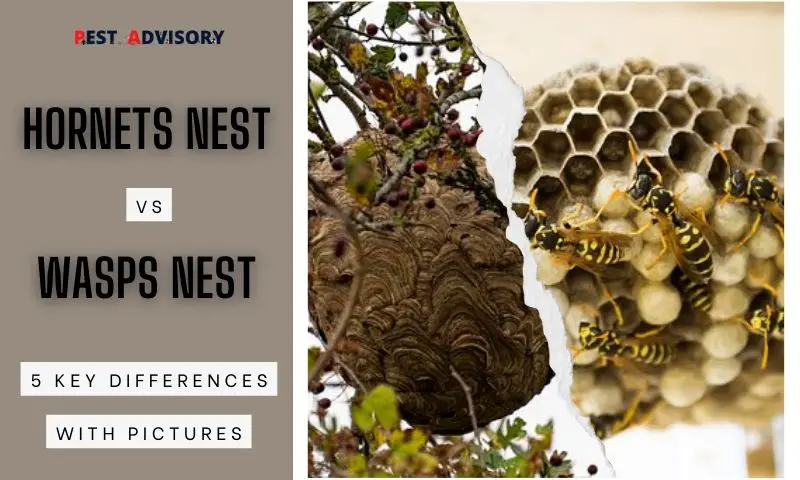Nature is full of fascinating creatures, but few are as feared as the stinging insects that make their homes in our backyards and parks.
When it comes to hornets and wasps, many people may think they are one and the same, but in reality, these two types of insects have distinct differences. One of the most noticeable differences is in their nests.
In this article, we’ll explore the 5 key differences between hornet and wasp nests, with pictures to help you identify which insect you may be dealing with.
Important Note: If you're tired of pests and want a reliable solution, then you should definitely consider seeking help from a professional pest control company. DIY solutions can be effective, but if you're dealing with a significant pest infestation, you don't want to rely solely on DIY methods. Pest control companies typically don't charge huge fees. You can fill out this form to receive free quotes from the top local pest control companies, and compare the quotes and see for yourself. Then, finally, your pest problems will be eliminated for good.
Whether you’re a curious nature enthusiast or just trying to keep your family safe, understanding the differences between these insects can be crucial.
So, let’s dive in and explore the world of hornets and wasps!
Identification of Hornet and Wasp Nest
Identifying a hornet or wasp nest can be challenging, as they can be located in various places, such as trees, under eaves, inside walls, or underground.
However, here are some signs to look for when trying to identify a hornet or wasp nest:
Visual Cues
Look for the nest itself, which can vary in shape, size, and location.
Hornets tend to build their nests in aerial locations like trees or high up on buildings or walls, while wasps may build nests on the ground, under eaves, or inside walls.
Buzzing Sounds
Listen for buzzing sounds coming from a specific location, especially during the day. This may indicate that a nest is nearby.
Presence of the Insects
Observe the insects themselves to identify whether they are hornets or wasps.
Hornets are larger and more aggressive than wasps, and have a distinct black-and-white pattern on their abdomen, while wasps tend to have slender, smooth bodies with black-and-yellow or black-and-white stripes.
Nest Material
Look at the material used to build the nest. Hornets and some wasps build paper-like nests from chewed wood pulp and saliva, while other wasps build nests from mud or other materials.
Comparing Hornets and Wasps Nests
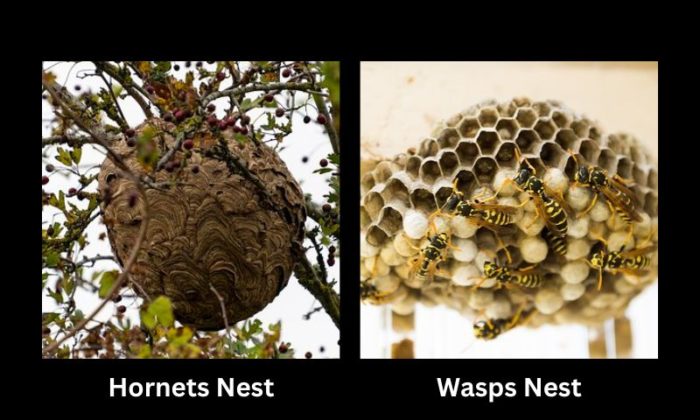
| Wasps’ Nests | Hornets’ Nests | |
|---|---|---|
| Size | Generally smaller, ranging from a few centimeters to a foot | Typically larger, can be up to several feet in diameter |
| Shape | Paper-like, with a distinctive honeycomb structure | Paper-like, but with a more spherical or teardrop shape |
| Material | Made of chewed-up wood fibers mixed with saliva | Made of chewed-up wood fibers mixed with saliva and hornet venom |
| Location | Often found under eaves, on tree branches or shrubs, or in ground burrows | Typically found in elevated locations, such as trees or bushes |
| Colony Size | Typically smaller, with up to a few hundred individuals | Can be larger, with up to several thousand individuals |
5 Key Differences between Hornets and Wasps Nest
Hornets and wasps may look similar, but their nests and behavior reveal key differences.
Hornets also tend to be more aggressive and have a more painful sting, making it important to know the distinction.
Size
Hornets and wasps are both members of the Hymenoptera order, but there are some differences between their nests in terms of size.
Hornets are typically larger than wasps and their nests are correspondingly larger as well.
A hornet’s nest can grow up to 60-70 cm (2-2.5 feet) in diameter, although some species can build nests that are even larger.
In contrast, wasp nests are usually smaller than hornets’ nests.
They can be as small as a golf ball or as large as a basketball, but generally, they are between 10-20 cm (4-8 inches) in diameter.
It’s worth noting that the size of a hornet’s or wasp’s nest can vary depending on the species and the location where it is built.
In general, however, hornet nests are larger than wasp nests.
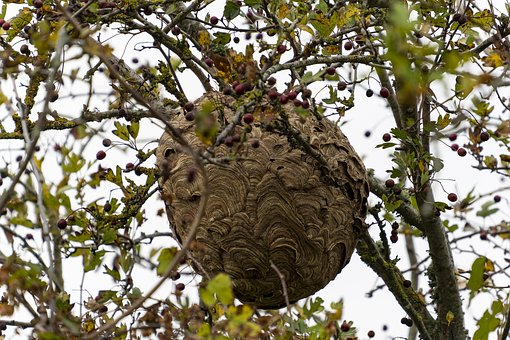
Shape
Hornets’ and wasps’ nests can have different shapes, depending on the species and the environment in which they are built.
Hornets’ nests are usually large, papery, and round or oval-shaped, with a single entrance at the bottom.
The cells within the nest are arranged in a series of concentric layers, like the rings of a tree.
Some hornet species build nests that are more elongated or cylindrical in shape, but they still tend to have a relatively uniform structure.
Wasp nests, on the other hand, can have a variety of shapes depending on the species.
Some wasps build nests that are similar to hornets, with a round or oval shape and a single entrance at the bottom.
Other species build nests that are more elongated or even conical in shape.
Some wasp species build paper nests that are shaped like honeycombs, with hexagonal cells arranged in a flat plane.
Overall, the shape of a hornet’s or wasp’s nest can be influenced by factors such as the size of the colony, the availability of nesting materials, and the location where the nest is built.
Material
Both hornets and wasps build their nests from a papery material that they create by chewing up wood fibers and mixing them with saliva.
However, there are some differences in the types of materials that hornets and wasps use, as well as the way they construct their nests.
Hornets typically use a variety of plant fibers to construct their nests, including bark, twigs, and leaves.
They chew these materials up into a pulp, which they then shape into the characteristic hexagonal cells that make up their nest structure.
Wasps also use a variety of plant fibers to create their nest material, but they tend to use more specific types of wood than hornets.
For example, some wasp species use pine or cedar wood, while others use softer woods like birch or poplar.
Wasps also tend to construct their nests in a different way than hornets.
While hornets build their nests in a series of concentric layers, wasps build their nests in a single layer, with the cells arranged side by side.
Overall, the type of material that hornets and wasps use to construct their nests can vary depending on the species and the environment in which they live.
However, both insects use a similar process of chewing up plant fibers and mixing them with saliva to create their papery nest material.
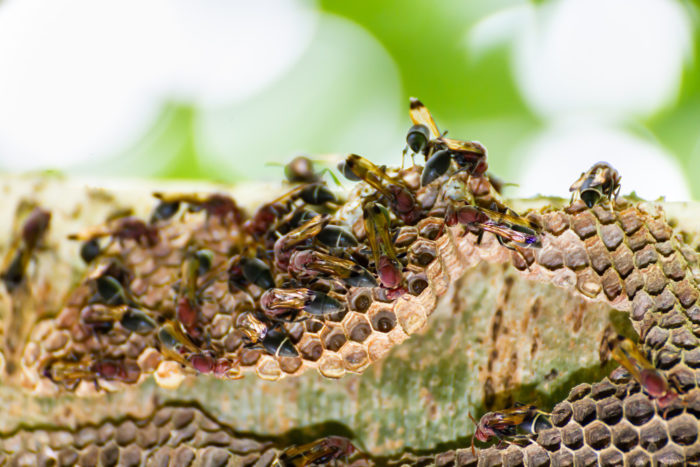
Location
The location of hornets’ and wasps’ nests can vary depending on the species and the environment in which they live.
However, there are some general patterns that can be observed.
Hornets typically build their nests in elevated locations, such as trees, bushes, or the eaves of buildings.
They prefer to build their nests in sheltered locations that are protected from the elements, such as under a roof overhang.
Hornets tend to build their nests in areas with abundant food sources, such as flowering plants or fruit trees, and they are often found in rural or suburban areas.
Wasps, on the other hand, can build their nests in a wider range of locations.
Some species build their nests in elevated locations, similar to hornets, while others build their nests in underground burrows or even inside human-made structures, such as walls or attics.
Wasps tend to build their nests in areas with abundant food sources, such as gardens or fields, and they are often found in both urban and rural areas.
Overall, the location of a hornet’s or wasp’s nest can be influenced by factors such as the availability of nesting materials, the availability of food sources, and the need for protection from predators and the elements.
Colony Size
The size of a hornet’s or wasp’s nest is often correlated with the size of the colony that inhabits it. As a general rule, hornet colonies are larger than wasp colonies, which means that hornet nests tend to be larger as well.
Hornet colonies can contain anywhere from a few hundred to several thousand individuals, depending on the species.
The largest hornet species, the Asian giant hornet, can have colonies that contain up to 700 workers.
In contrast, wasp colonies tend to be smaller, typically containing a few dozen to a few hundred individuals.
The size of a hornet or wasp colony can be influenced by factors such as the availability of food and nesting sites, the number of predators in the area, and the genetic makeup of the colony itself.
Some species of hornets and wasps are more social than others, meaning that they tend to form larger colonies with more individuals.
Overall, the size of a hornet’s or wasp’s nest can provide a rough estimate of the size of the colony that inhabits it, with hornet nests tending to be larger than wasp nests due to the larger size of hornet colonies.
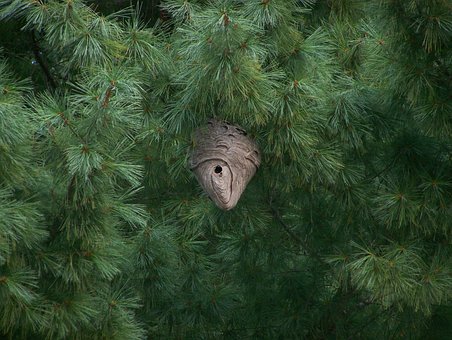
Frequently Asked Questions
From what materials do wasps construct their nests?
Wasps build their nests using a papery substance made of chewed wood fibers mixed with their own saliva.
The raw materials for the nests can come from a variety of sources, such as old fences, decks, or even wooden outdoor furniture.
Wasps use their powerful mandibles to chew and process the wood fibers, which they then mix with their saliva to create the papery pulp they use to build their nests.
As the structure dries, it hardens and becomes more durable, providing a sturdy home for the colony.
What are the different types of wasp nests?
The three most common types of wasp nests are paper wasp nests, yellow jacket nests, and hornet nests.
Paper wasp nests are open and shaped like an umbrella, while yellow jacket and hornet nests are enclosed and often found in trees or on buildings.
How many wasps can typically be found in a paper wasp nest?
Paper wasp colonies typically have fewer than 200 wasps per nest, with some colonies containing between 12 and 100 wasps.
There is usually one queen who lays 200-300 eggs per day, and the workers take over the nest-building process and forage for food as the colony expands.
Rarely do paper wasp nests contain more than a few hundred individuals.
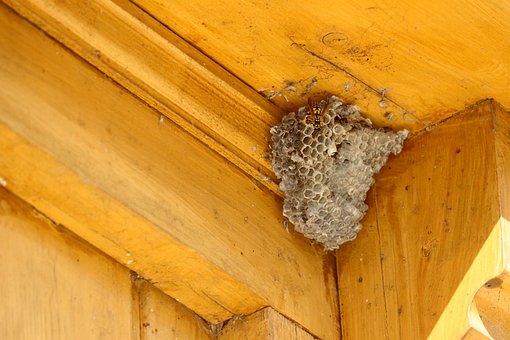
Final Words
Hornets and wasps may seem like similar creatures at first glance, but their nests reveal many differences that can help us identify and understand these stinging insects better.
From the shape and size of their nests to their construction materials and locations, there are many unique features that set hornets and wasps apart.
Armed with this knowledge, we can better protect ourselves and our families from the dangers of these insects while getting rid of wasp’s or hornets nests.
With these 5 key differences in mind, you’ll be well on your way to becoming a true expert on hornet’s and wasp’s nests!

